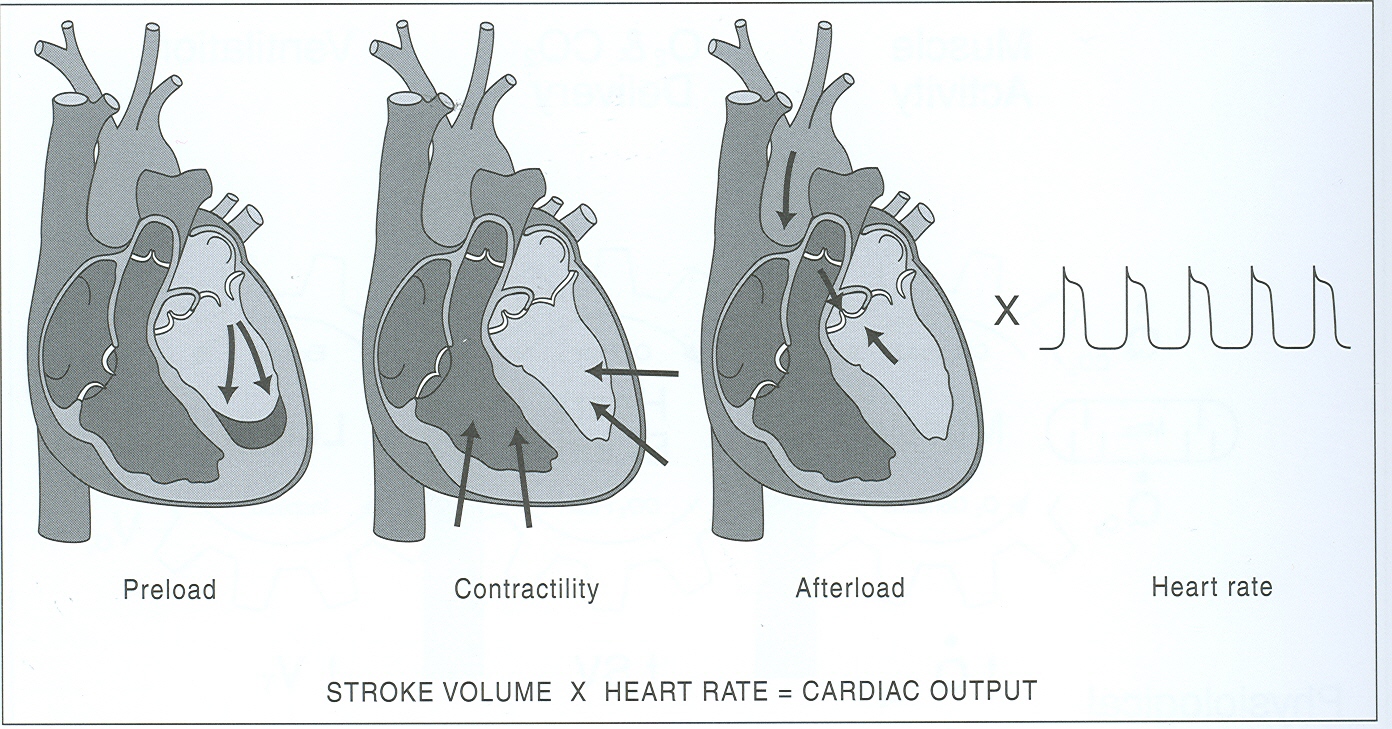Cardiac Output - definition, normal / decreased

Cardiac Output - the volume of BLOOD the HEART pumps out to the body each minute. Cardiac output is an important measure of the heart’s efficiency. Many cardiovascular diseases, such as ARRHYTHMIA and HEART FAILURE, can limit cardiac output. Cardiologists measure cardiac output as the combination of HEART RATE and stroke volume (the amount of blood the left ventricle ejects into the AORTA with each contraction). There are several methods for determining stroke volume, including dye injection and thermal differential.
In a person whose cardiovascular system is healthy, cardiac output increases with increased physical activity such as exercise, in which both heart rate and the force of the heart’s contractions increase. A heart with damage due to disease such as CARDIOMYOPATHY or HEART FAILURE, or as a consequence of MYOCARDIAL INFARCTION, cannot increase the force of its contractions, limiting cardiac output. Severe damage can result in cardiac output that is less than the body’s needs even at rest. Medications to strengthen the heart and focus the efforts of its contractions can often improve cardiac efficiency, though only mediating the underlying cause can restore adequate cardiac output.
People who have a high AEROBIC FITNESS level, such as athletes and those who regularly engage in AEROBIC EXERCISE, can significantly increase their cardiac output to send more blood to their muscles. During intense aerobic activity, 60 percent or more of the cardiac output may go to the skeletal muscles. High cardiac output is essential to get enough blood and oxygen to vital organs at the same time.
See also CARDIAC CAPACITY; LEFT VENTRICULAR EJECTION FRACTION (LVEF).